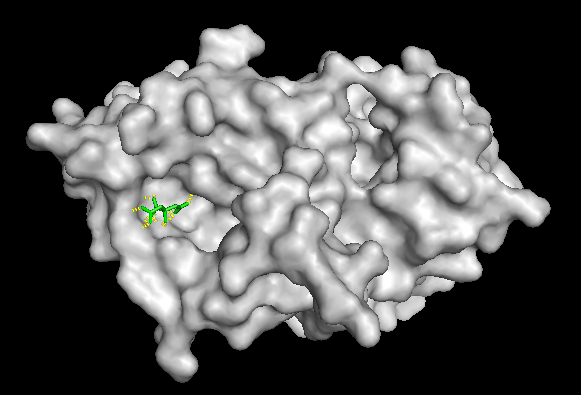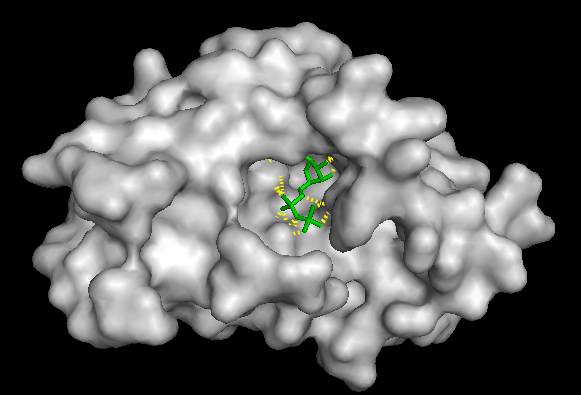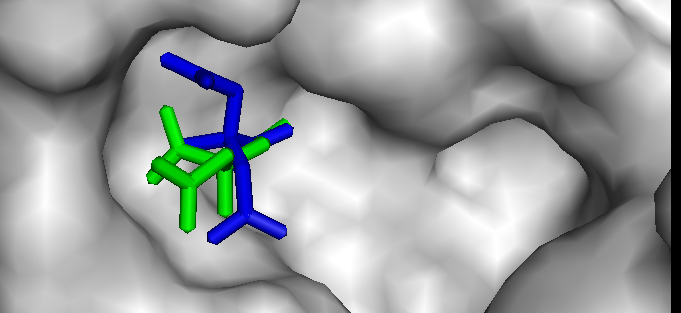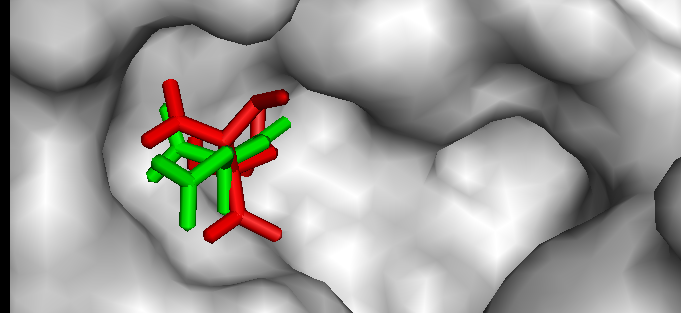|
FtsZ and CoaD have known active sites. These are located where the organic
ligand (green) is bound to the surface of a pocket in FtsZ and CoaD. In fact, the largest
pocket on a protein usually contains an active site (Liang et al., 1998). An active site is analogous to a lock, while
the organic ligand is analogous to a "key" that fits the lock. In theory, a chemical compound (ligand)
that binds strongly at or near the active site could be used as a drug to inhibit the protein's function, i.e.,
the compound might have antimicrobial properties.
While images (a) and (b) show FtsZ and CoaD with their organic ligands, images (c) and (d) show FtsZ's pocket with its organic ligand and a very similar chemical compound docked by AutoDock Vina. Vina is a relatively new program for drug discovery, molecular docking, and virtual screening. Although Vina has been tested extensively for accuracy by other researchers (Chang et al., 2010), images (c) and (d) show that Vina does a good job of positioning ligands very close to where they would bind in reality, as opposed to in the computer. Vina offered high performance, enhanced accuracy, and ease of use. |
|
 |
 |
| (a) FtsZ with organic ligand | (b) CoaD with organic ligand |
|---|---|
 |
 |
| (c) FtsZ pocket with organic ligand and docked modified organic ligand | (d) FtsZ pocket with organic ligand and docked ZINC ligand |